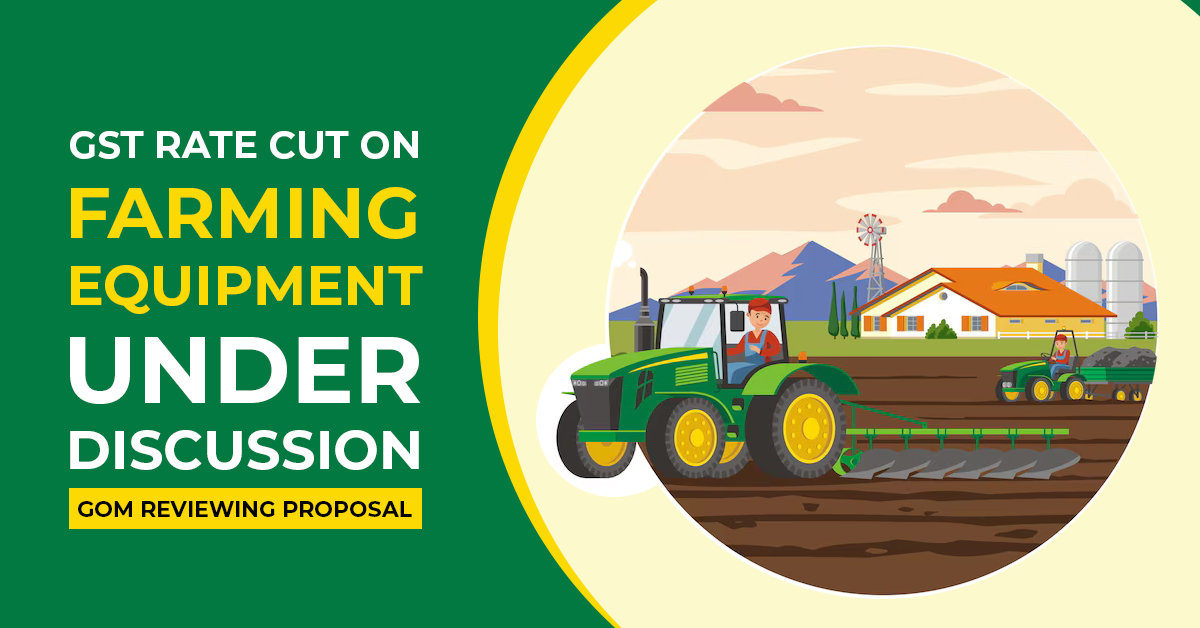
Union Finance Minister Nirmala Sitharaman stated that a proposal to reduce the GST on agricultural equipment and inputs is currently being reviewed by a Group of Ministers (GoM).
Sitharaman answering the queries on the Finance Bill, 2025 mentioned that a proposal to reduce the GST on farm inputs, including tractors, drip irrigation systems, fertilisers, and pesticides, to zero was discussed in the 45th GST Council meeting dated September 17, 2021, but cannot be agreed upon at the time. “Now the Group of Ministers is looking into it, so the items will be looked at by the GoM and they will take a call,” she added. Later, the Lok Sabha passed the Finance Bill, in 2025.
The GST structure for agricultural items has been elaborated by the FM. “Seeds attract zero GST. There is 5 per cent GST on fertilisers, agricultural implements, and manuals, manually operated or animal-driven. And hand tools attract zero GST, and tractors attract 12 per cent. Agricultural pumps also attract 12 per cent GST,” she stated.
The finance minister said that the average GST rate has reduced to 12.2% from 15% at the time of its introduction.
The finance minister defended including digital elements in the Income Tax Bill 2025, expressing that existing provisions under the Income-Tax Act, 1961, mainly referred to physical records, leaving a gap in addressing digital data.
“A provision to look at the data exists in the current environment, particularly in certain cases of search and seizure authorised by a competent authority. Now, it has been specifically mentioned in the new Income-Tax Bill because the 1961 Act does not account for digital records,” she mentioned.
Specifying the cases where digital proof has assisted in discovering tax evasion, she mentioned, “Unaccounted money of ₹250 crore was detected when encryption was decoded. Evidence from WhatsApp messages revealed crypto transactions worth over ₹90 crore and a bogus billing syndicate worth ₹200 crore.”
FM highlighted how Google Maps history aided in monitoring locations linked to unaccounted transactions, while Instagram was utilized to establish ownership of high-value assets.
Also Read: GST Impact on the Agriculture Sector in India
Lok Sabha has been notified by the Finance Minister that the “nudge campaign” of the government, motivating the taxpayers to voluntarily reveal their foreign assets and income, has given significant results.
Remembering a 2018 announcement by former finance minister Arun Jaitley concerning global information-sharing agreements, Sitharaman cited that India now receives data on foreign accounts kept by Indian residents.
As part of this endeavour, SMS and emails were sent to 19,501 select taxpayers, prompting 11,162 of them to revise their income-tax returns and reveal foreign assets of ₹11,259.29 crore and foreign income of ₹154.42 crore. Also, 883 taxpayers have revised their residential status from resident to non-resident.
The campaign’s ripple effect led to 13,516 more taxpayers declaring foreign assets worth ₹7,564 crore and foreign income of ₹353 crore, she stated.
Cumulatively, the initiative resulted in 30,161 taxpayers declaring foreign assets of ₹29,208 crore, and foreign income of ₹1,089 crore in their revised filings for 2024-25, Sitharaman stated.
Quoting a study by the National Institute of Public Finance and Policy (NIPFP), she added that “Most consumer items face low GST rates or none at all. Less than 3 per cent of common consumption items attract the highest rate of 28 per cent.”
Also, she mentioned that approximately 60% of the consumption items fall beneath the 5% or lower GST bracket and listed essential goods and services such as unbranded food items, certain life-saving drugs, health care, education, public transport, sanitary napkins, and agricultural services were waived from GST.
She articulated the reforms to lessen the litigation along with the higher fiscal limits for the tax appeals, new posts of joint commissioners for appeals, and the government’s Vivaad Se Vishwas dispute resolution schemes in 2020 and 2024.